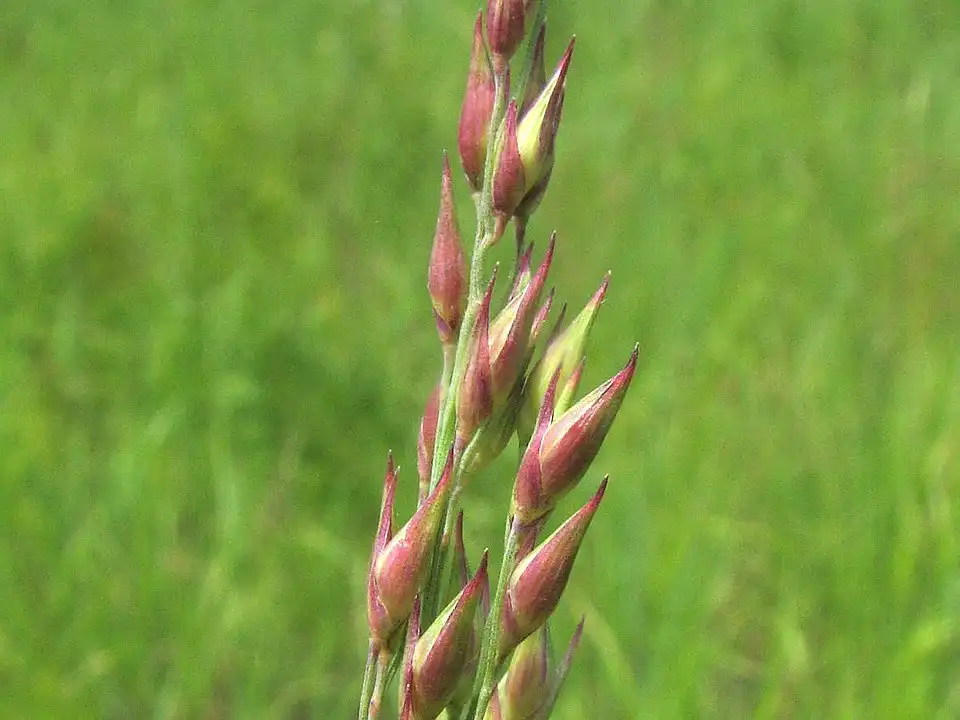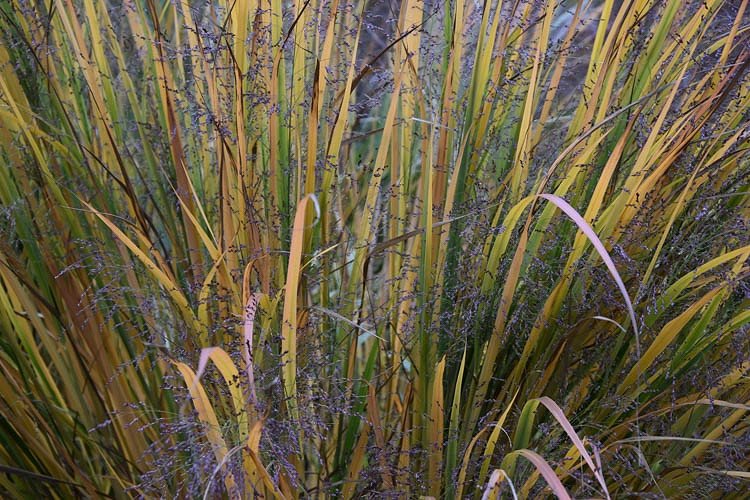Panicum virgatum (switchgrass) is a warm-season perennial grass endemic to North America. It is a robust and adaptable plant known for its multiple ecological benefits and different applications. Erosion control and soil health maintenance are key parts of sustainable land management, especially in light of rising environmental issues. Switchgrass has emerged as a significant ally in preventing erosion and promoting soil health among the many natural remedies available. Once restricted to foraging and decorative reasons, this natural grass species has received respect for its ability to change landscapes and deliver several advantages.

Characteristics of Switchgrass:
Appearance:
Switchgrass normally grows to a height of 3 to 8 feet, with some kinds reaching as high as 10 feet. It grows in clusters of stems and has a bunchgrass growth shape.
Leaves:
Switchgrass has long, slender leaves that range in color from green to bluish-green. They have a pronounced midrib that runs along the center of the body.
Read about: Quackgrass (Elymus repens)
Inflorescence:
Switchgrass’ flowering structure consists of fluffy panicles that rise above the foliage. These panicles produce seeds, which are an essential source of food for wildlife.

Benefits for Switchgrass:
There are a number of environmental benefits of planting the switchgrass.
Controlling Erosion:
Although erosion is a natural phenomenon, human actions frequently increase its consequences. Deforestation, construction, and agriculture can all result in significant soil loss, endangering land productivity and the health of adjacent ecosystems. Switchgrass, with its extensive root network, plays an important role in minimizing these issues. Switchgrass’ deep roots stretch up to 10 feet below the surface, effectively binding soil particles and reducing erosion danger. Switchgrass is particularly effective in locations prone to erosion, such as sloping hillsides, riverbanks, and wildfire-affected areas.
Soil Health:
Healthy soil is the cornerstone of productive ecosystems. Switchgrass improves soil health by improving its structure, water retention capacity, and nitrogen cycling. As switchgrass develops and matures, its organic matter-rich root structure gradually enriches the soil, encouraging microbial activity and enhancing overall soil fertility. This, in turn, increases crop yields in agricultural settings and promotes the establishment of native plants in restoration initiatives.
Read about: Indian grass (Sorghastrum nutans)
Carbon Storage and Mitigation:
Carbon sequestration is one of the most convincing environmental benefits of switchgrass plantings. Switchgrass, as a perennial grass, absorbs carbon dioxide from the atmosphere and stores it in its above-ground biomass and large root system. Switchgrass, unlike annual crops, which are harvested and replaced each year, remains in place for numerous growing seasons, providing for long-term carbon storage. This property makes switchgrass a valuable tool for mitigating climate change by lowering carbon dioxide levels in the atmosphere.

Improving Water Quality:
Switchgrass plants play an important role in improving water quality by acting as a natural runoff filter. Switchgrass’ dense growth slows water velocity, allowing debris and contaminants to settle before entering bodies of water. Furthermore, the root system of the plant aids in nutrient uptake, lowering the likelihood of excess nitrogen and phosphorus entering streams and generating hazardous algal blooms. Switchgrass plantations contribute to the conservation of aquatic ecosystems and the preservation of human health by improving water quality.
Enhancement of Biodiversity and Wildlife Habitat:
Switchgrass plantations can provide biodiversity and wildlife habitat. Switchgrass’ dense growth and vertical structure provide cover and nesting opportunities for a variety of bird and small animal species. This habitat supply is especially important in landscapes that have been fragmented by urbanization and agriculture. Switchgrass plantations encourage native flora and wildlife by establishing different ecosystems and promoting ecological equilibrium.
Potential for Renewable Energy and Biofuels:
Switchgrass has the potential to be a renewable energy source and biofuel feedstock besides its environmental benefits. Its copious biomass can be gathered and turned into biofuels such as cellulosic ethanol, giving a more environmentally friendly alternative to fossil fuels. Switchgrass production for bioenergy corresponds with the growing demand for sustainable energy solutions that reduce greenhouse gas emissions and reliance on limited resources.

Considerations and Challenges:
While switchgrass has various advantages, it is not without its disadvantages. Proper setup and administration are important to its success. The preparation of Adequate sites, variety selection, and implementation of solid agricultural practices are required to maximize the benefits of switchgrass for erosion control and soil health.
Read: How to Propagate Pothos
Research:
Switchgrass genetics, physiology, and agronomic methods have all been deeply researched. Researchers are looking for ways to improve its growth, yield, and applicability for a different variety of applications.
Conclusion:
Switchgrass plantations are a dynamic and adaptable answer to environmental concerns. The benefits of farming switchgrass extend far beyond its position as an erosion-control technique, ranging from carbon sequestration and soil health improvement to improved water quality and wildlife habitat provision. As we continue to manage the complexity of climate change and degraded ecosystems, harnessing the potential of switchgrass plantations offers a path to a more sustainable and resilient future.



